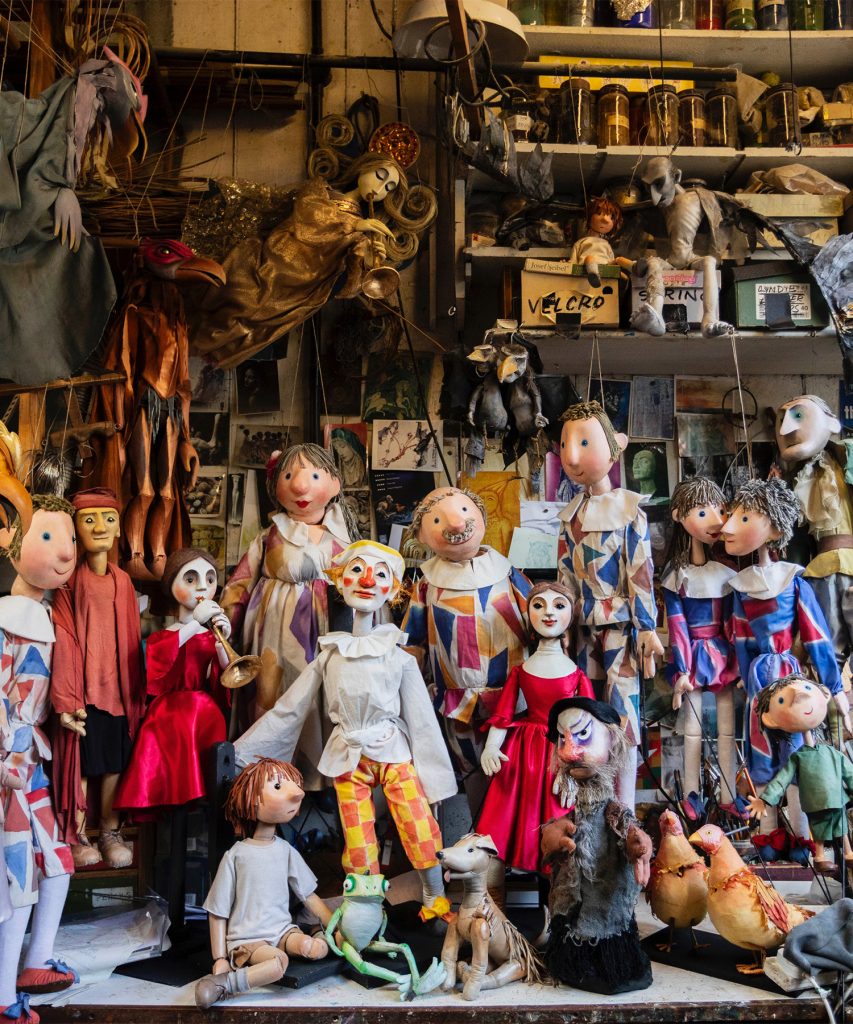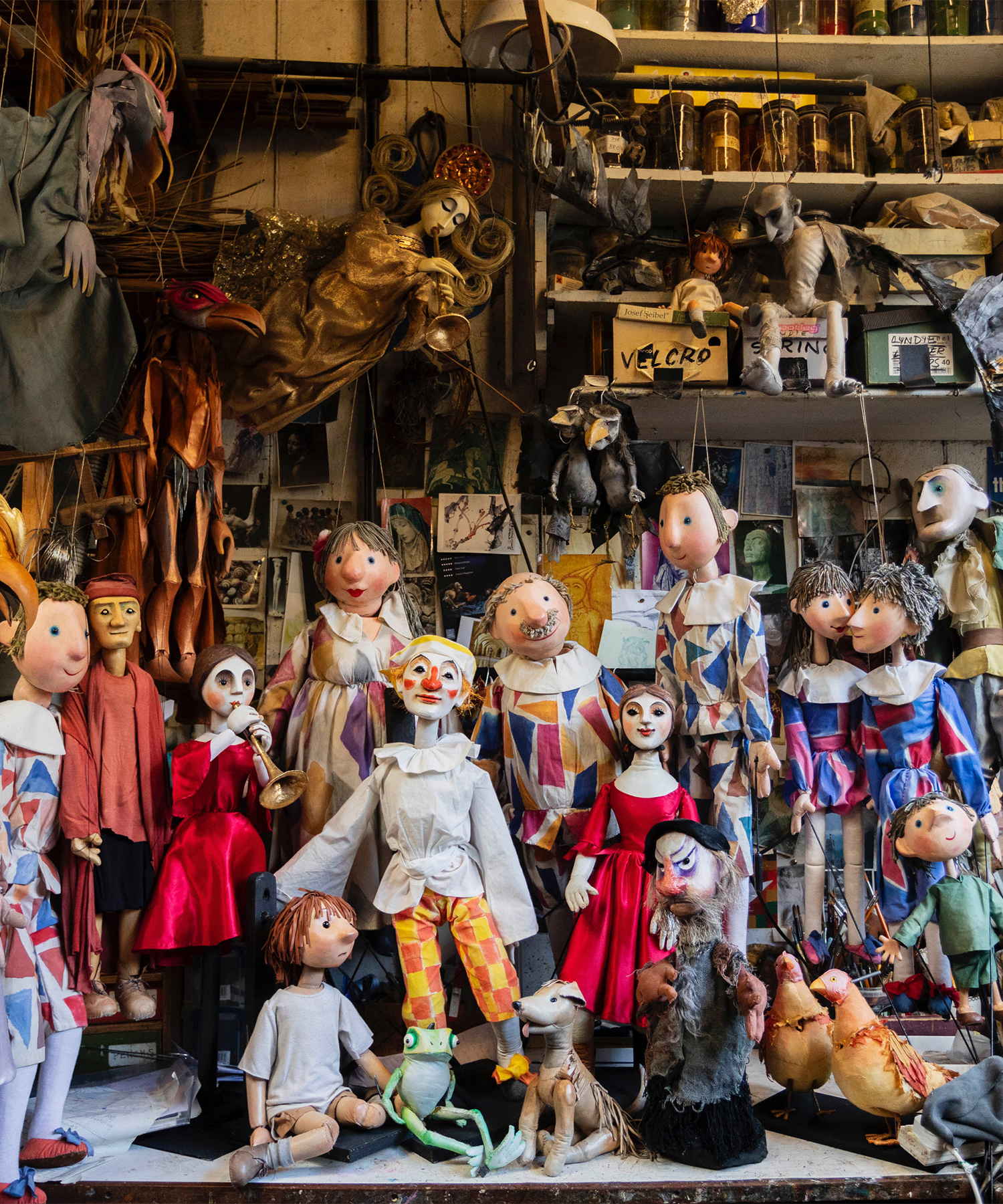
The Artistry and Craftsmanship of Lyndie Wright’s Puppet Creations

# The Enchantment of Puppetry: A Glimpse into Lyndie Wright’s Magical World
In the heart of Bruton, UK, an exhibition titled *The Curious Art of Puppetry* at *Make Hauser & Wirth* opens the door to the enchanting behind-the-scenes world of puppetry. The show, featuring the works of celebrated puppet maker Lyndie Wright, offers its visitors a unique opportunity to delve into the alchemical space where wood, fabric, and string are transformed into living characters. For over 65 years, Wright’s career has been at the vanguard of British puppetry. And now, her storied creations for legendary institutions like the Royal Shakespeare Company, National Theatre, and London’s Little Angel Theatre can be admired up close.
### **The Magical Allure of Puppetry**
There’s always been something magical about puppetry. Unlike other forms of theater where the workings are often shrouded in secrecy, puppetry reveals its mechanical wonders — wooden joints, fabric skins, and cotton strings. However, instead of diminishing the marvel of a puppet’s performance, understanding its construction and movement elevates its artistry. This unique charm becomes especially apparent in *The Curious Art of Puppetry*, as Lyndie Wright’s finely crafted marionettes, rod puppets, and glove puppets create a world where fantasy and craftsmanship intersect.
Wright’s puppets evoke a nostalgic fascination for theater lovers — a curiosity and yearning to peek behind the curtain to experience the magic at its most intimate. As an exhibition, this carefully curated collection feels akin to stepping into a puppet-maker’s workshop, where moments of stillness capture the potential energy of characters waiting to burst into life.
### **A Legacy in British Puppetry**
Lyndie Wright’s puppetry career began alongside her husband, John Wright, when they co-founded the Little Angel Theatre in 1961. Situated in a small site in London, it blossomed into a space embracing all things puppetry — from workshops to performances. Their living space within the complex allowed Lyndie to seamlessly merge life and art, producing designs for children’s performances and experimental productions alike.
From that modest cottage, Wright’s influence grew, setting a high standard for puppet craftsmanship across England’s major theaters. She designed and built puppets for esteemed venues such as the Royal Shakespeare Company and the National Theatre, becoming one of the most notable figures in British puppetry. Her work spans diverse styles and genres, from large-scale productions to intimate children’s performances, and even her contributions to shows like *Angelo*, based on illustrator Quentin Blake’s work, remain iconic in the world of children’s theater.
### **Craftsmanship That Brings Characters to Life**
Visiting Wright’s exhibition reveals not only finished puppets but also tools and works-in-progress. A reconstruction of a corner of her studio, filled with carving tools, reference images, and an unfinished wooden hand, offers a glimpse into the meticulous process of puppet-making. This setup is more than a homage to the artist — it stands as a testament to the craftsmanship required to infuse inanimate objects with seemingly tactile emotions and narratives.
The distinct materials used in each puppet display Wright’s deep understanding of texture and movement. For example, the sensual combination of wood and leather in her production *Venus and Adonis* (2004) aligns with the mythological story’s tones of romance and tragedy. Similarly, her mechanical monsters from *The Soldier’s Tale* (1968) convey both sinister and comedic elements, a balancing act navigated through their complex structures.
Moreover, her puppets’ forms, rich with expressive details painted in cloth and wood, reflect Wright’s innate ability to blend aesthetic beauty and performance utility — a necessary proficiency for any master puppeteer. As her daughter Sarah Wright observes, “The challenge of the puppeteer … is to find out how to bring that life to the forefront to tell the right story.” In this case, the puppets almost exuberantly anticipate the moment actors will imbue them with breath, suggesting a life already hidden within their construction.
### **A Glance at Notable Designs**
Among the highlights of *The Curious Art of Puppetry* is the striking diversity of Wright’s designs:
– **”Wild Night of the Witches” (1961):** An early work made from carved wood and fabric, this piece reflects Wright’s foundational style, marrying simplicity and visual lyricism.
– **Monsters from *The Soldier’s Tale* (1968):** Almost human-height, these fantastical creatures blend the ominous and the playful, waiting motionless as though a single gesture could animate them into rambunctious action.
– **”Angelo” (1975):** Created for Quentin Blake’s celebrated 1970 children’s book, this set of tumblers, with their floppy joints and whimsical paper mâché forms, speaks directly to an audience’s childlike joy.
– **”Macbeth” (2013